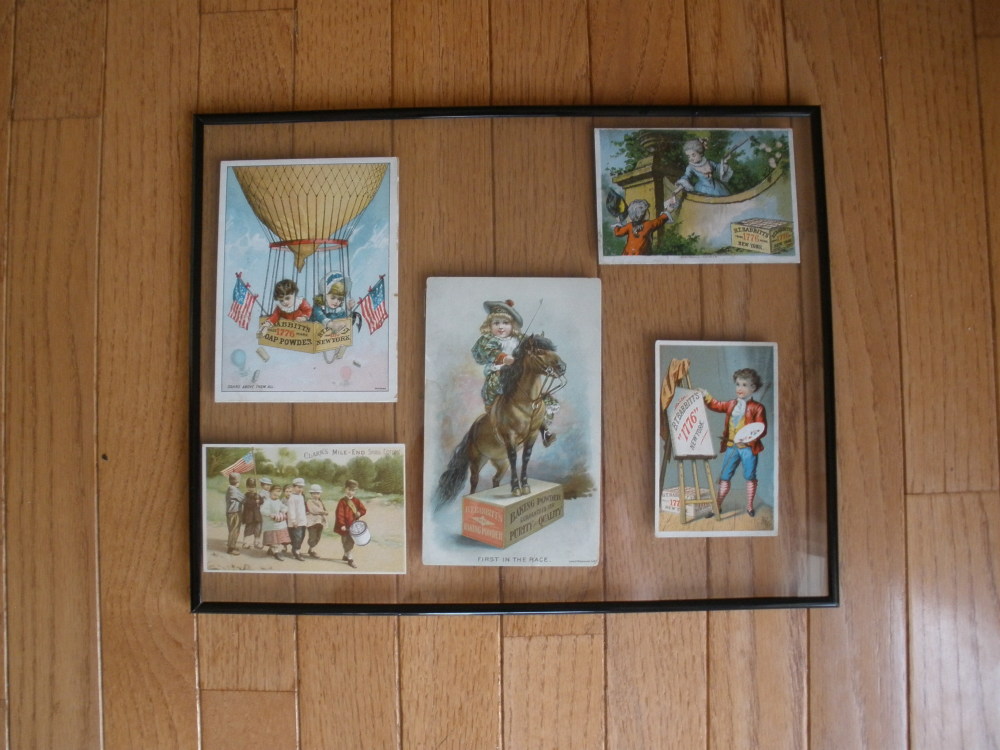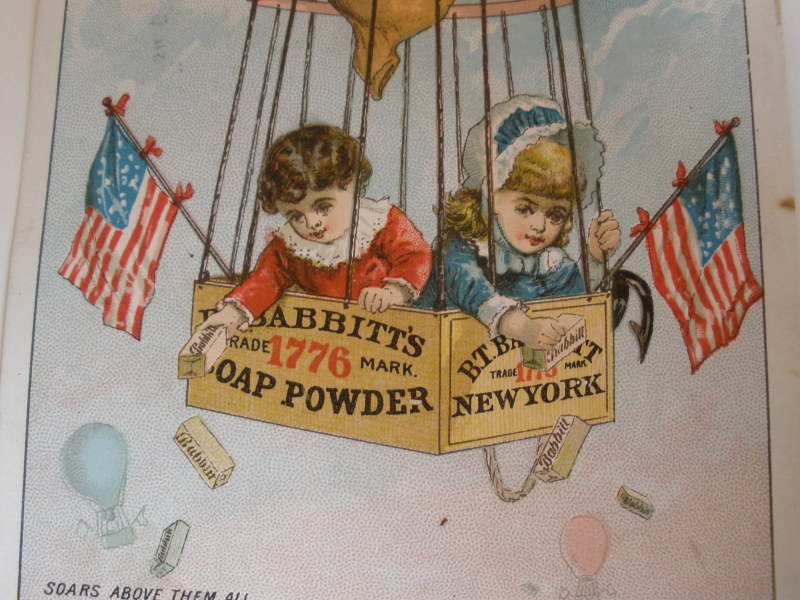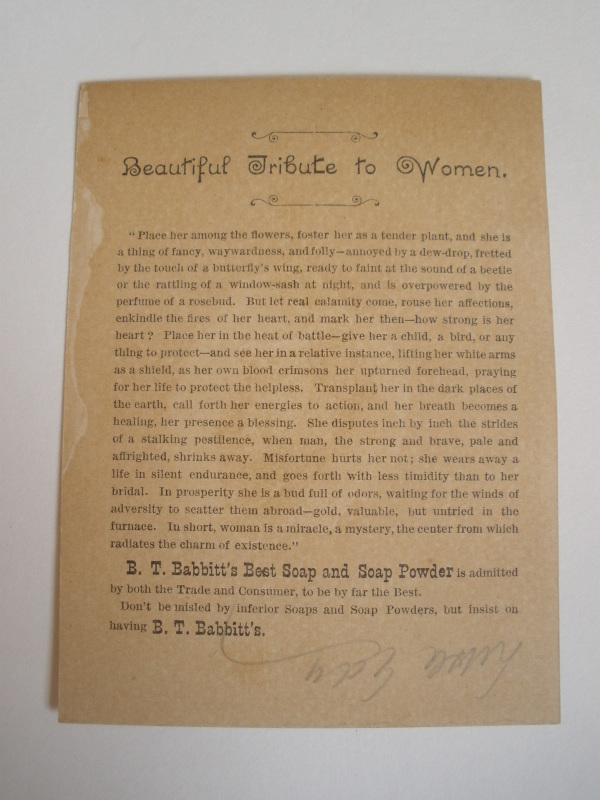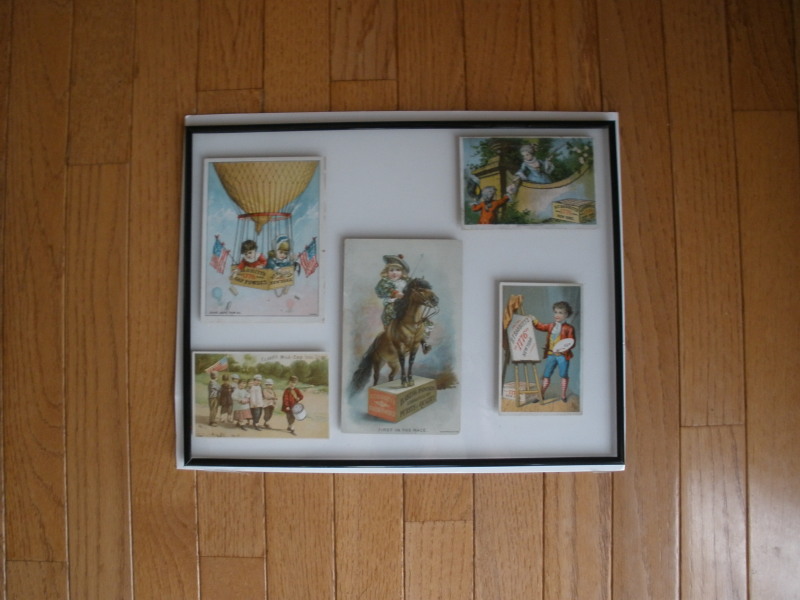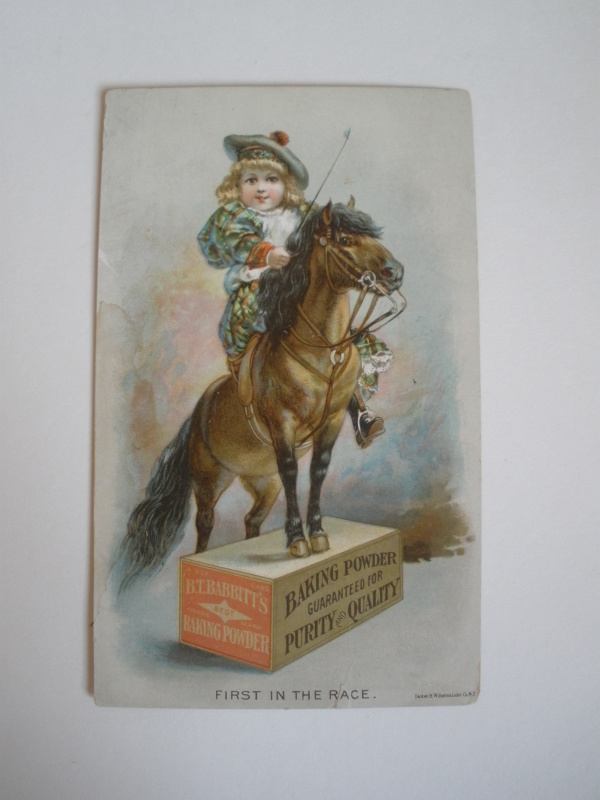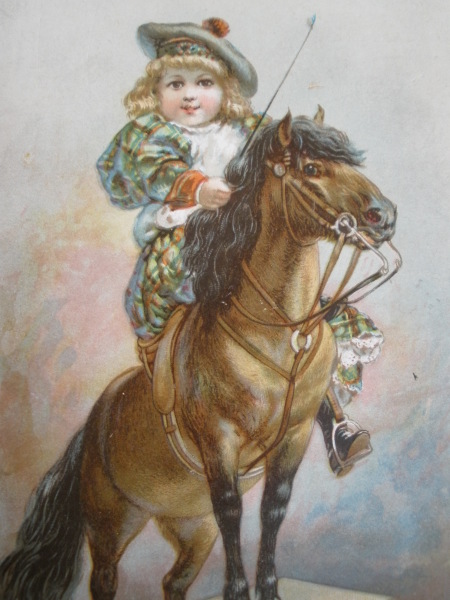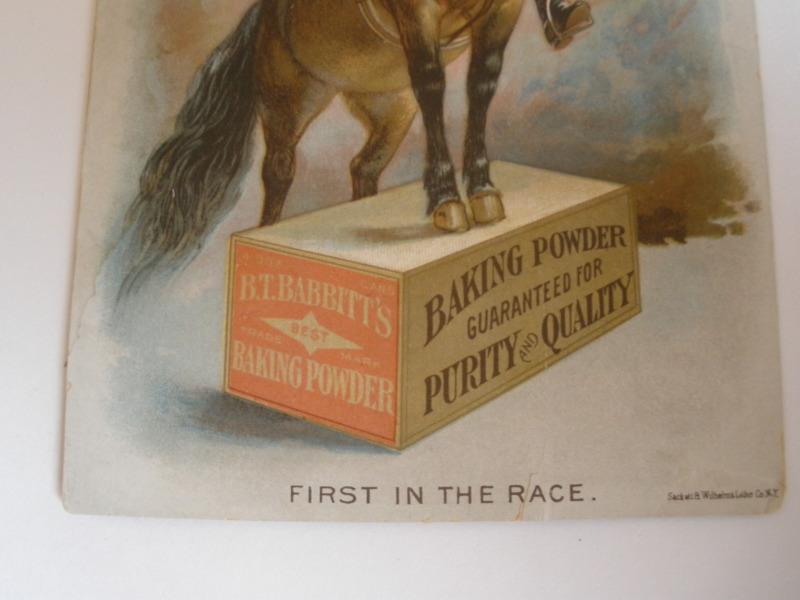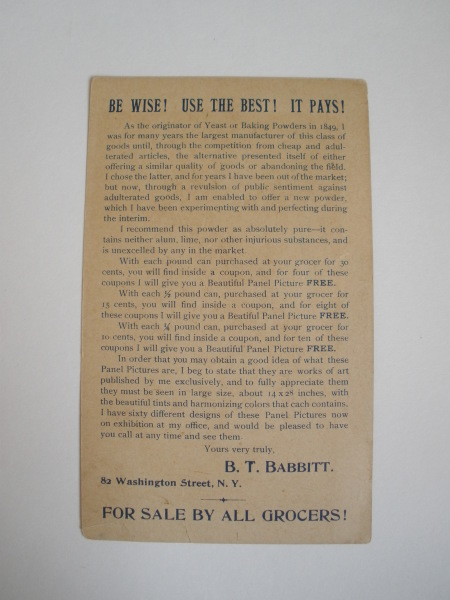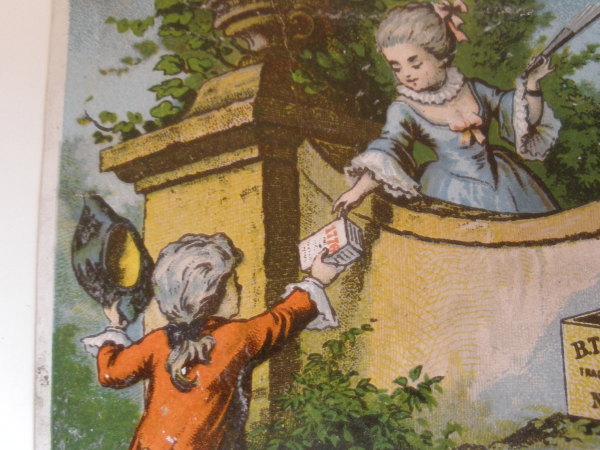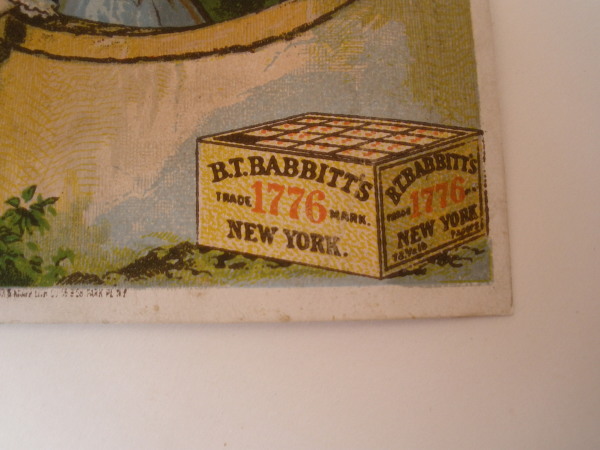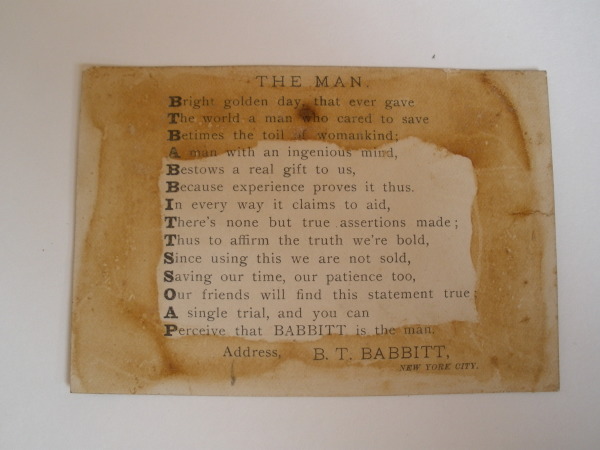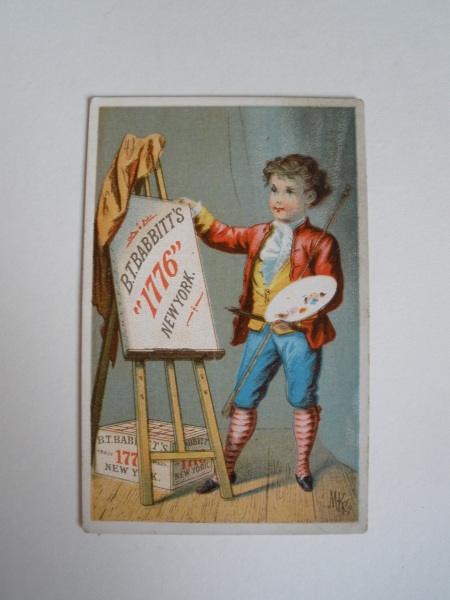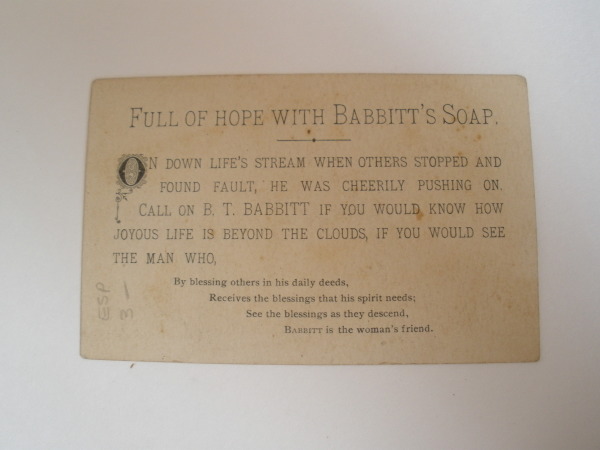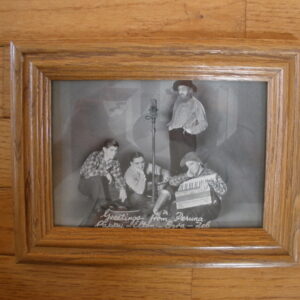For sale is an amazing collect of 4 different 1890s era BABBITT’S 1776 SOAP POWDER TRADE CARDS and one CLARK’S ONT (Our New Thread) SPOOL COTTON THREAD trade card in a brand new double float frame. The condition of each authentic item varies slightly but most are in excellent condition with minor surface and edge wear. The double float wood frame measures 14 inches by 11 inches. The double float frame allows easy viewing of the back of the trade cards. This excellent Victorian trade collection includes:
Victorian CLARK’S ONT SPOOL COTTON THREAD trade card features a parade of boys lead by a boy use a spool of thread as a drum. Measures 3-1/4 inches wide by 4-1/2 inches tall. The Clark Thread Company operated in Newark and East Newark, NJ from 1866 through 1949. In the 1880s, Clark’s “O.N.T.” (Our New Thread) was widely advertised in national publications. In 1883, the U. S. subsidiary of the John Clark, Jr. & Co. of Glasgow became Clark Mile-End Spool Cotton Company.
There are FOUR different BABBITT’S 1776 SOAP POWDER trade cards. Benjamin Talbot Babbitt (born May 1, 1809) was a self-made American businessman and inventor who amassed a fortune in the soap industry, manufacturing Babbitt’s Best Soap. In 1851, he became the first to manufacture and market soap in individual bars. Babbitt was known as a genius of advertising. He rivaled his friend P. T. Barnum in originality and success, becoming a household name throughout the U.S. His soap was one of the first nationally advertised products. The soap was sold from brightly painted street cars with musicians, which helped lead the phrase “get on the bandwagon.” Babbitt was the first manufacturer to offer tours of his factories and one of the first to give away free samples. He used the advertising slogans, “Soap for all nations” and “Cleanliness is the scale of civilization”.
Over a century ago, during the Victorian era, one of the favorite pastimes was collecting small, illustrated advertising cards that we now call trade cards. These trade cards evolved from cards of the late 1700s used by tradesmen to advertise their services. Although examples from the early 1800s exist, it was not until the spread of color lithography in the 1870s that trade cards became plentiful. By the 1880s, trade cards had become a major way of advertising America’s products and services, and a trip to the store usually brought back some of these attractive, brightly-colored cards to be pasted into a scrapbook. Some of the products most heavily advertised by trade cards were in the categories of: medicine, food, tobacco, clothing, household, sewing, stoves, and farm. The popularity of trade cards peaked around 1890, and then almost completely faded by the early 1900s when other forms of advertising in color, such as magazines, became more cost effective.

